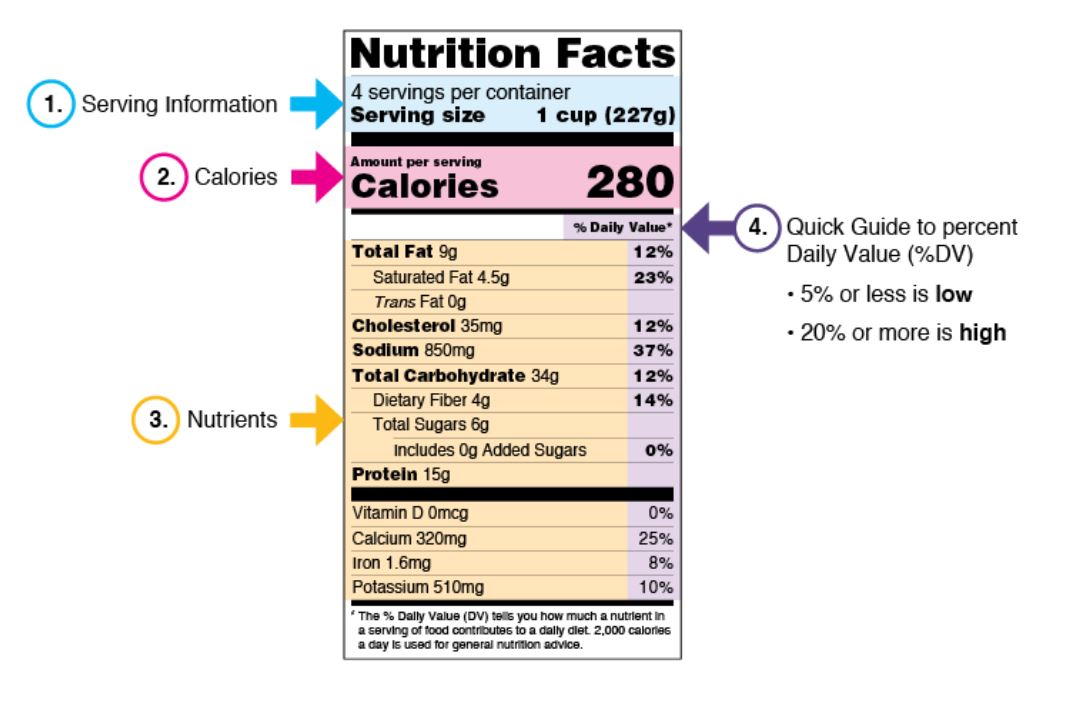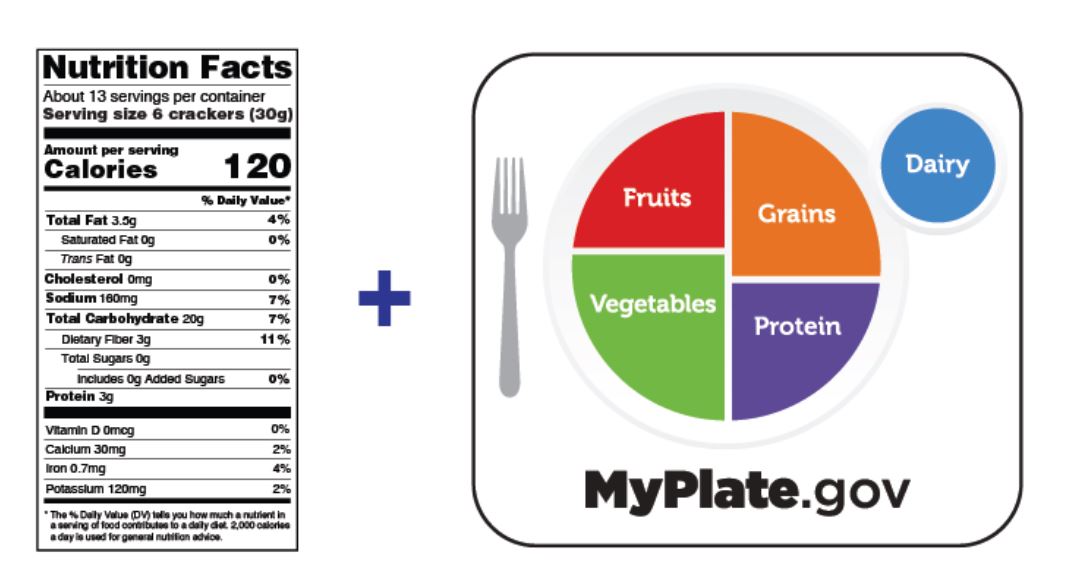Food Portions: Choosing Just Enough for You
To reach or stay at a healthy weight, how much you eat is just as important as what you eat. Do you know how much food is enough for you? Do you understand the difference between a portion and a serving? The information below explains portions and servings, and it provides tips to help you eat just enough for you.
What is the difference between a portion and a serving?
A portion is how much food you choose to eat at one time, whether in a restaurant, from a package, or at home. A serving, or serving size External link, is the amount of food listed on a product’s Nutrition Facts label, or food label (see Figure 1 below).
Different products have different serving sizes. Sizes can be measured in cups, ounces, grams, pieces, slices, or numbers—such as three crackers. Depending on how much you choose to eat, your portion size may or may not match the serving size.
To see how many servings a container has, look at the top of the label. “Servings per container” is listed right above “Serving size.” In the example below, a frozen lasagna serving size is 1 cup. But the container has four servings. If you want to eat 2 cups—or half the package—you’d be eating two servings.
Do a little math to find out how many calories you would really be getting.
1 serving = 280 calories
2 servings = 280 × 2 = 560 calories
In this case, eating two servings would mean getting twice the calories—and other nutrients—that are listed on the food label.

How have recommended serving sizes changed?
The U.S. Food and Drug Administration (FDA) changed some food and beverage serving sizes so the labels more closely match how much we typically eat and drink. As a result of recent updates to the Nutrition Facts label External link, some serving sizes on food labels may be larger or smaller than they were before (see Figure 2 below). For instance, a serving size of ice cream used to be 1/2 cup. Now it’s 2/3 cup. A serving size of yogurt used to be 8 ounces. Now it’s 6 ounces.
Remember: The serving size on a label is not a recommendation of how much you should eat or drink.
How much should I eat?
The serving size on a food label may be more than or less than the amount you should eat. That’s because how many calories External link you need each day to maintain your weight or lose weight may depend on
your age
your current weight and height
your metabolism
whether you’re male or female
how active you are
For example, if you’re a 150-pound woman whose main physical activity is a short walk once a week, you’ll need fewer calories than a woman about your size who engages in intense physical activity, such as running, several times a week.
To help you figure out how many calories are just enough for you, check out the following resources.
The Dietary Guidelines for Americans, 2020–2025 External link can give you an idea of how many calories you may need each day based on your age, sex, and physical activity level.
The Body Weight Planner tool helps you make your own calorie and physical activity plans to reach and maintain your goal weight.
The MyPlate Plan External link helps you form a healthy eating plan with the amounts of food and beverages that are right for you.
How can the Nutrition Facts food label help me?
The FDA’s Nutrition Facts food label is printed on most packaged foods. The food label tells you how many calories and how much fat, protein, carbohydrates, and other nutrients are in one food serving. Many packaged foods contain more than a single serving. The updated food label lists the number of calories in one serving size using larger print than before, so it is easier to read.
Other helpful facts on the food label
The food label has other useful information about what is in one food serving, such as
total fat. For example, one serving of the food item shown in Figure 3 below has 1 gram of saturated fat and 0 grams of trans fat.
added sugars External link. The Dietary Guidelines for Americans, 2020–2025 External link recommends that less than 10% of your total daily calories should come from added sugars.
sodium. The Dietary Guidelines for Americans, 2020–2025 recommends limiting sodium to 2,300 milligrams per day, or even less for children younger than age 14.
other nutrients. Americans don’t always get enough vitamin D and potassium. That’s why the updated food label in Figure 3 includes serving information for both these nutrients. Because most Americans generally do get enough vitamin A and vitamin C, these nutrients are no longer included on the food label. However, food makers may include them if they choose.


